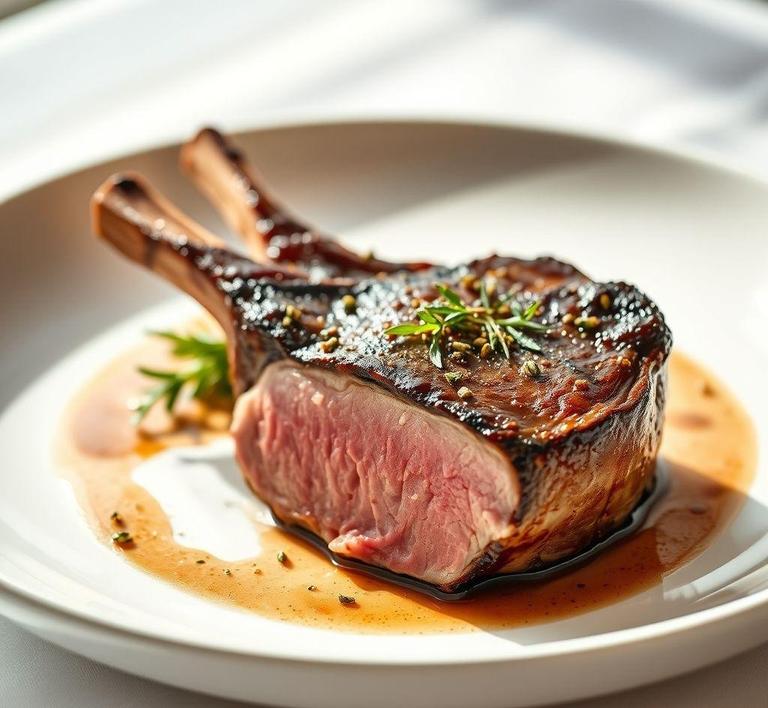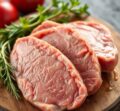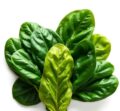So, you’ve got some leftover lamb and you’re wondering if you can refreeze it without ruining the taste or texture? Well, you’re in luck! Refreezing lamb meat is possible, but there are a few key things you’ll want to keep in mind to ensure it stays delicious. From how long it’s been stored to the best way to thaw and repackage it, this guide will help you navigate the process so your lamb stays as fresh as possible for your next meal. Whether you’re trying to save money or just avoid wasting good food, mastering the art of refreezing lamb meat can be a real kitchen game-changer!
Can You Refreeze Lamb Meat?

The question of whether you can refreeze lamb meat is more nuanced than a simple yes or no. The key factor hinges on how the lamb was thawed and whether it has been handled safely throughout the process. Generally speaking, refreezing lamb meat is possible, but only under strict conditions to avoid food safety risks.
When lamb meat is thawed in the refrigerator, where temperatures are consistently below 40°F (4°C), bacterial growth is minimal or slowed down significantly. Under these conditions, the meat remains safe to refreeze because it hasn’t entered the ‘danger zone’ temperature range (40°F to 140°F) where bacteria multiply rapidly. On the other hand, if lamb has been thawed using quicker methods, such as in warm water, microwave, or left out on the countertop at room temperature, refreezing it is not recommended. This is because bacteria may have had a chance to grow, increasing the risk of foodborne illness.
Another aspect is the duration of thawing. If the lamb meat has been thawed in the fridge but left unused for more than 1-2 days, it’s better to cook it rather than refreeze. After cooking, the meat can be safely frozen again.
In summary:
- Safe to refreeze: Lamb thawed fully in the fridge, within 1-2 days, and not left at unsafe temperatures.
- Not safe to refreeze: Lamb thawed by faster methods or left out too long at room temperature.
How To Refreeze Lamb Meat?
Refreezing lamb meat requires some thoughtful steps to maintain safety and maximize quality. Here’s a detailed guide on the proper process:
- Check the Thawing Method: Confirm that the lamb was thawed in the refrigerator and has not been left out at room temperature for more than 2 hours.
- Inspect the Meat: Look for any signs of spoilage such as off smells, slimy texture, or discoloration. If anything seems off, discard the meat.
- Portion Before Refreezing: It’s a good idea to cut the lamb into portions if you haven’t already. This helps with faster freezing and easier thawing in the future.
- Wrap Properly: Use airtight packaging to minimize freezer burn. Wrap the lamb tightly in plastic wrap or aluminum foil, then place it in a freezer bag or vacuum-seal it. Remove as much air as possible to prevent dehydration.
- Label and Date: Clearly label the package with the date of refreezing. While refrozen meat is safe for several months, quality diminishes over time.
- Freeze Quickly: Place the lamb in the coldest part of the freezer to freeze it as quickly as possible. Rapid freezing helps preserve texture and flavor by preventing large ice crystals from forming.
- Consider Cooking Before Refreezing: For lamb meat that has been thawed and then cooked, you can safely freeze the cooked lamb again. This is often preferable because cooking kills bacteria, improving safety.
Quality Impact
Refreezing lamb meat is safe if done properly, but it does have an impact on the quality of the meat, primarily affecting texture, moisture, and flavor.
- Moisture Loss: When meat freezes, water inside the muscle cells forms ice crystals. These crystals puncture the cell walls, and when the meat thaws, the damaged cells leak moisture. This leads to drier, less juicy lamb after refreezing. Each cycle of freezing and thawing exacerbates this moisture loss.
- Texture Changes: The repeated freeze-thaw cycle can make the lamb tougher and grainier. This is especially noticeable in lean cuts or ground lamb, where the structure is more delicate.
- Flavor Deterioration: Although freezing slows down spoilage, the natural enzymatic reactions and oxidation that occur in meat still continue, albeit at a reduced pace. Refreezing can sometimes dull the flavor, especially if the lamb isn’t tightly sealed and experiences freezer burn.
- Freezer Burn Risk: If the lamb is not wrapped well, it can suffer from freezer burn, where the surface dries out and becomes tough and discolored. This negatively impacts taste and appearance but does not usually cause safety issues.
To mitigate these effects, it’s best to limit refreezing and consume the meat shortly after thawing when possible. Also, using vacuum sealing or tightly wrapped packaging can significantly reduce quality loss.
Refreezing lamb meat is a safe practice when done correctly, primarily if the lamb was thawed slowly in the refrigerator and kept under safe temperature conditions. However, it should be avoided if the meat has been exposed to higher temperatures or left out too long, as this increases food safety risks. When you do refreeze lamb, careful handling-such as proper wrapping, portioning, and fast freezing-can help maintain the best possible quality.
Keep in mind that while safety can be preserved, refreezing inevitably impacts the texture, moisture, and flavor of lamb meat. To enjoy lamb at its best, try to plan portions to minimize thawing and refreezing cycles, and consider cooking leftover thawed lamb before freezing again.
Is It Safe To Refreeze Lamb Meat?
The question of whether you can safely refreeze lamb meat is a common one, often influenced by how the meat was initially handled and stored. The short answer is: it depends.
When lamb meat is thawed correctly in the refrigerator and kept at a safe temperature (below 40°F or 4°C), it can be refrozen safely. The key factor here is preventing the meat from spending too much time in the ‘danger zone’ – temperatures between 40°F and 140°F (4°C and 60°C) – where harmful bacteria multiply rapidly.
If lamb meat was thawed on the countertop, under warm water, or left out for more than two hours at room temperature, refreezing is unsafe. This is because bacteria can grow to dangerous levels, increasing the risk of foodborne illnesses even if the meat is later frozen again. Freezing stops bacterial growth but does not kill bacteria already present, so improper thawing followed by refreezing can be risky.
Additionally, repeated freezing and thawing cycles can degrade the quality of the meat. Each cycle causes ice crystals to form and break down muscle fibers, which can result in a tougher texture and loss of moisture and flavor. So, while refreezing is sometimes safe, it’s generally best to limit the number of freeze-thaw cycles to preserve the best taste and texture.
Signs That Lamb Meat Should Not Be Refrozen
Knowing when lamb meat is no longer safe to refreeze is crucial to avoid food poisoning or wasting food. Here are some tell-tale signs that your lamb should not be refrozen:
- Off Smell: Fresh lamb has a mild, slightly sweet smell. If it smells sour, rancid, or has a strong ammonia-like odor, this indicates bacterial spoilage.
- Slimy or Sticky Texture: A slimy film or sticky feeling on the surface is a classic sign of bacterial growth. Even if the meat looks okay, this texture change is a warning sign.
- Discoloration: While slight color changes can occur naturally, any greenish, gray, or brownish hues, especially when combined with bad odor, signal spoilage.
- Excessive Moisture or Ice Crystals: If thawed meat has lost a lot of liquid, or there are large ice crystals formed after thawing, this suggests the meat has undergone temperature abuse or multiple freeze-thaw cycles, lowering quality and safety.
- Been Out Too Long: If the lamb has been left out at room temperature for more than two hours (or one hour if above 90°F/32°C), refreezing is not safe.
If you notice any of these signs, it’s best to discard the lamb to avoid health risks.
Common Refreezing Mistakes
When it comes to refreezing lamb, many people inadvertently make mistakes that jeopardize safety or quality. Here are some frequent errors to watch out for:
- Refreezing Thawed Meat Left at Room Temperature: Allowing meat to sit out too long before refreezing is one of the biggest safety mistakes. Bacteria multiply quickly at room temperature, so meat should never be refrozen if it has been sitting out.
- Refreezing After Partial Cooking: Partially cooked meat should be either fully cooked and consumed or discarded. Refreezing partially cooked lamb can promote bacterial survival and spoilage.
- Not Using Proper Storage Containers: Refreezing meat in inadequate packaging can cause freezer burn, which dries out the meat and diminishes flavor and texture.
- Ignoring Thawing Method: Thawing lamb in warm water or the microwave without cooking immediately afterward before refreezing can be dangerous due to uneven heating and bacterial growth.
- Multiple Freeze-Thaw Cycles: Each cycle progressively damages the meat, resulting in poor texture, flavor loss, and increased moisture loss.
Tips And Tricks
To handle lamb meat safely and make the most of refreezing when necessary, follow these expert tips:
- Plan Ahead: Only thaw the amount of lamb you intend to use, to minimize the need for refreezing.
- Thaw Properly: Always thaw lamb in the refrigerator. For quicker thawing, submerge the sealed meat in cold water, changing the water every 30 minutes until thawed.
- Use Airtight Packaging: When freezing or refreezing lamb, wrap it tightly in heavy-duty aluminum foil, plastic wrap, or freezer paper, or place it in airtight freezer bags to prevent freezer burn.
- Label and Date: Keep track of when you first froze the meat. Ideally, use lamb within 4 to 12 months of freezing for best quality.
- Refreeze Quickly: If you’ve thawed lamb in the fridge and decide not to use it, refreeze it as soon as possible to reduce bacterial growth.
- Cook Immediately After Microwave Thawing: If you thaw lamb in the microwave, cook it immediately rather than refreezing.
- Use Leftovers Promptly: Cooked lamb leftovers can be frozen again safely if stored properly and cooled quickly, but avoid repeated freeze-thaw cycles.
Conclusion
Refreezing lamb meat can be safe, but it requires caution, proper handling, and knowledge of the meat’s condition. Always thaw lamb meat safely, avoid leaving it out at room temperature, and watch out for spoilage signs like off smells and sliminess. Understanding and avoiding common refreezing mistakes will help maintain both the safety and quality of your lamb.
Ultimately, while refreezing is an option to prevent food waste, planning your portions carefully and using the right thawing and freezing techniques will ensure your lamb stays delicious, safe, and enjoyable every time. If you’re ever in doubt about the safety of your lamb, it’s better to err on the side of caution and discard questionable meat rather than risk foodborne illness.


